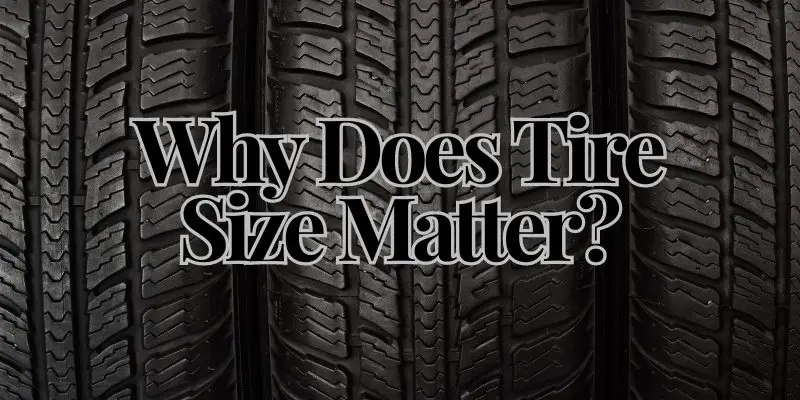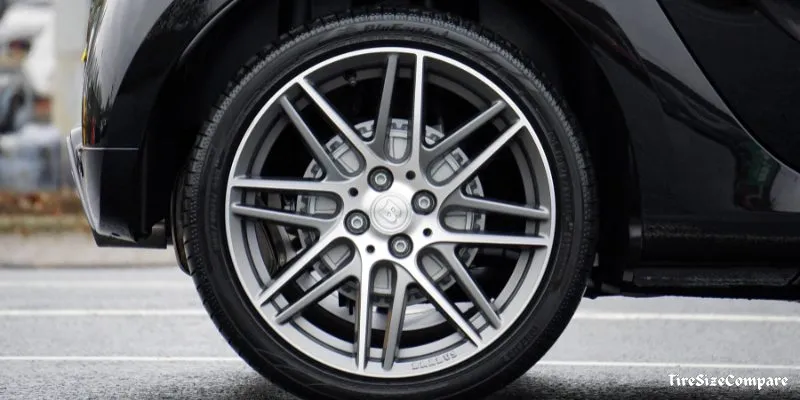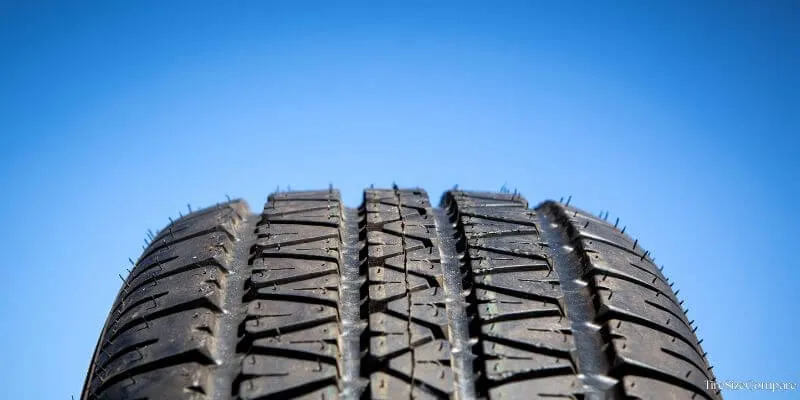Why Does Tire Size Matter?

Tire size matters because it affects your vehicle’s performance, safety, and fuel efficiency. The right tire size ensures proper handling, stability, and comfort while driving.
Using the wrong tire size can lead to poor fuel economy, reduced traction, and potential safety hazards. Choosing the correct tire size is crucial for getting the best performance from your vehicle.
Understanding Tire Size
Tire size refers to the dimensions of a tire, which include its width, aspect ratio, and diameter. These measurements are typically printed on the tire’s sidewall, such as 205/55R16. Here’s what each part means:
- 205: Tire width in millimeters.
- 55: Aspect ratio (height of the tire’s sidewall as a percentage of the width).
- R16: Diameter of the wheel in inches.
How Tire Size Affects Performance
Tire size plays a significant role in your vehicle’s overall performance. Larger tires can provide better grip and handling, especially on rough or uneven surfaces. They also improve the vehicle’s stability during cornering and braking.
However, larger tires may also result in a rougher ride and increased fuel consumption. Smaller tires, on the other hand, usually offer a smoother ride and better fuel efficiency.
They are lighter and have less rolling resistance, which can enhance acceleration and braking performance. However, they may not provide the same level of grip and stability as larger tires.

Impact on Fuel Efficiency
The size of your tires can directly impact your vehicle’s fuel efficiency. Larger tires have more rolling resistance, which means the engine has to work harder to move the vehicle.
This increased effort leads to higher fuel consumption. Conversely, smaller tires have less rolling resistance, allowing the engine to work more efficiently and use less fuel.
Safety Considerations
Safety is a primary concern when it comes to tire size. Using the wrong size can compromise your vehicle’s ability to handle and brake effectively.
Oversized tires may cause your vehicle’s speedometer to read incorrectly, potentially leading to speeding without realizing it. Undersized tires can result in reduced ground clearance, increasing the risk of damage to the vehicle’s undercarriage and reducing stability.
Comfort and Ride Quality
Tire size also affects the comfort and ride quality of your vehicle. Larger tires often result in a stiffer ride due to their lower aspect ratio, meaning less cushioning between the tire and the road.
Smaller tires generally provide a more comfortable ride as they have a higher aspect ratio, offering more cushioning and absorbing road imperfections better.

Choosing the Right Tire Size
Selecting the right tire size for your vehicle involves considering several factors:
- Vehicle Manufacturer’s Recommendations: Always refer to the vehicle manufacturer’s guidelines for the recommended tire size.
- Driving Conditions: Consider the typical driving conditions you encounter, such as city driving, highway driving, or off-road conditions.
- Performance Needs: Determine whether you prioritize performance, fuel efficiency, or ride comfort.
Mixing Tire Sizes
In some cases, you might be tempted to mix tire sizes, such as putting larger tires on the rear of your car for a more aggressive look. However, this can be dangerous and may even be illegal in some areas.
Mixing tire sizes can cause uneven wear, poor handling, and increased stress on your vehicle’s drivetrain. It’s always best to use the same size tires on all four wheels unless your car’s manufacturer specifically allows for different sizes.
Incorrect Tire Size
Using the incorrect tire size can lead to several issues:
- Reduced Performance: Your vehicle may not handle as well, especially in challenging driving conditions.
- Increased Wear and Tear: Tires and other vehicle components may wear out faster due to improper size.
- Safety Risks: The wrong tire size can compromise your vehicle’s safety features, such as braking and traction control systems.

Misconceptions
There are some common misconceptions about tire size:
- Bigger is Always Better: While larger tires can enhance performance in some areas, they are not always the best choice for every vehicle or driving condition.
- Any Tire Will Do: It’s crucial to use tires that match the specifications recommended by the vehicle manufacturer to ensure optimal performance and safety.
Can I Use a Different Tire Size Than Recommended?
It’s best to stick with the manufacturer’s recommended tire size. Using a different size can affect your vehicle’s performance, safety, and fuel efficiency.
How Do I Find the Right Tire Size for My Car?
Check the tire size information on the driver’s side door jamb, in the owner’s manual, or on the tire’s sidewall.
What Happens if I Use a Tire That’s Too Large or Too Small?
Using the wrong tire size can lead to reduced handling, increased fuel consumption, incorrect speedometer readings, and potential safety hazards.
Do Larger Tires Improve Off-Road Performance?
Yes, larger tires can provide better grip and stability on rough terrains, making them suitable for off-road driving.
Are Smaller Tires Better for Fuel Efficiency?
Generally, yes. Smaller tires have less rolling resistance, which can improve fuel efficiency.
Conclusion
Tire size plays a crucial role in your vehicle’s performance, safety, and efficiency. By understanding what tire size means and how it affects your car, you can make informed decisions when selecting new tires.
Always follow your manufacturer’s recommendations and avoid mixing tire sizes to ensure the best possible driving experience.



